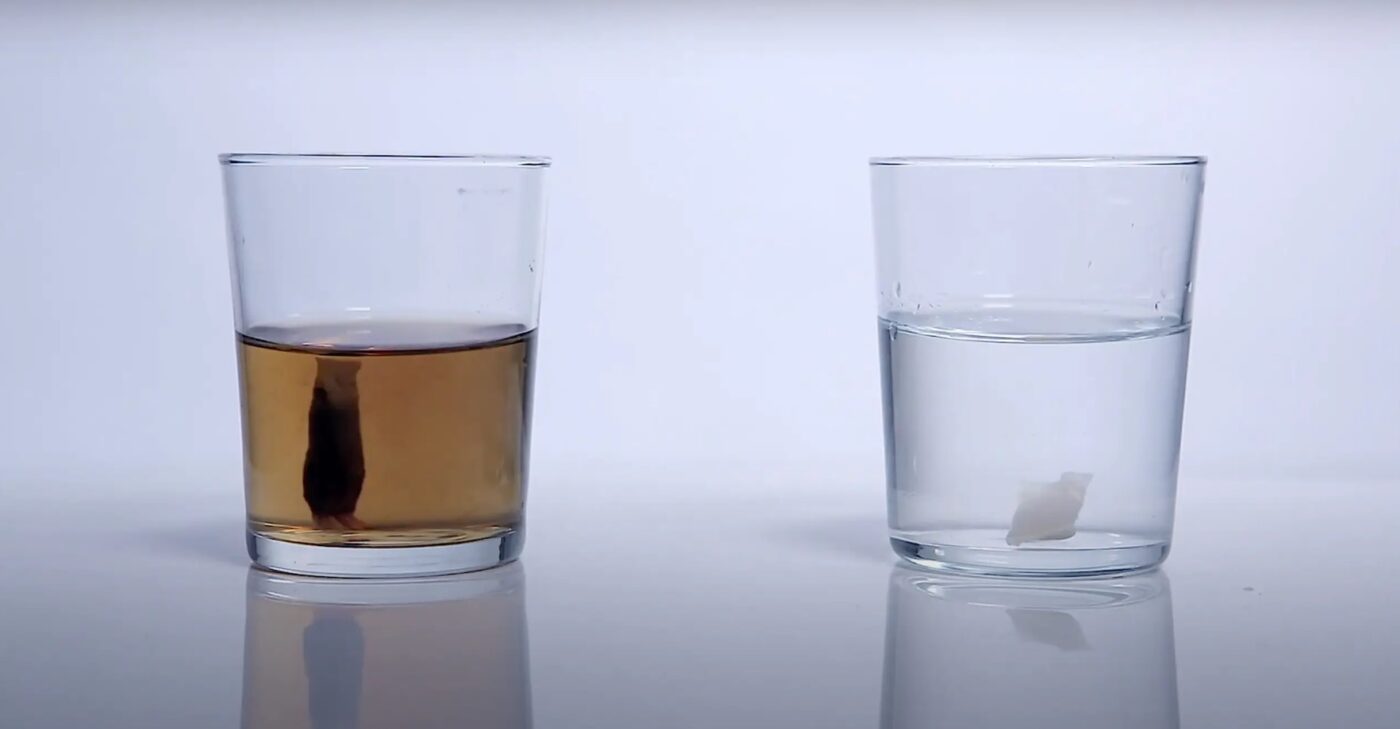Understanding the Differences Between Snus and Nicotine Pouches

Smokeless tobacco products, such as chewing tobacco, have long been available on the market, offering an alternative to cigarettes, cigars, and even vapes. One advantage of these products is that they don’t produce smoke or aerosol, which can be bothersome to others.
A popular smokeless tobacco product today is snus. Snus consists of powdered tobacco, which can come either loose or in small pouches. It is discreet and convenient to use, but the tobacco content may discourage some users. This is where nicotine pouches offer a useful alternative.
Nicotine pouches, like snus, are also used orally but contain no tobacco. Instead, they deliver nicotine to satisfy cravings without the tobacco-related drawbacks.
In this blog, we’ll explore the differences between snus and nicotine pouches, focusing on their characteristics, usage, and potential health effects.
Snus vs. Nicotine Pouches: Flavor and Application
Understanding the differences between snus and nicotine pouches begins with their core components and production processes.
Snus is a tobacco-based product made from air-dried tobacco, water, salt, an alkalizing agent, and aromatic flavors. The mixture undergoes steam pasteurization to inhibit bacterial growth and maintain texture. After processing, the snus is typically packaged in organic cellulose pouches or stored in cans.
Usage of Snus:
For the pouch variant, simply take one from its packaging and place it between your gum and cheek or upper lip. The nicotine and flavor gradually release and are absorbed through the oral mucosa into your bloodstream. For loose snus, you manually shape a portion of the tobacco mixture and place it between your upper lip and gum.
Snus has a distinctive flavor, characterized by the rich, earthy, and smoky notes of tobacco, often accompanied by subtle saltiness or bitterness. Additional flavorings like mint, spices, citrus, and berries can enhance the taste, offering a refreshing, sweet, or tangy twist to the tobacco’s robust profile.
Nicotine Pouches, in contrast, are tobacco-free. Instead of using whole tobacco, manufacturers extract nicotine from tobacco leaves and blend it with plant-based fillers, flavorings, sweeteners, and other ingredients that help maintain the product’s integrity and potency. The nicotine mixture is then sealed in a non-woven fleece pouch, designed to retain moisture and freshness.


Usage of Nicotine Pouches:
Nicotine pouches are used similarly to snus. Take a pouch from its container, place it between your upper lip and gum, and allow it to release nicotine and flavor. After use, discard the pouch properly.
The absence of tobacco in nicotine pouches results in a cleaner, more consistent taste, driven solely by the added flavorings. Unlike tobacco, which can vary in flavor based on cultivation and storage conditions, nicotine pouches deliver a predictable taste experience. Popular flavors include mint, citrus, coffee, and more, with brands like Bridge offering options such as Cool Mint, Spearmint, Wintergreen, and Citrus.
Despite their differences, both snus and nicotine pouches are best placed between the upper lip and gum. This placement facilitates optimal nicotine and flavor release while minimizing saliva production and reducing the risk of accidental swallowing.
Snus vs Nicotine Pouches: Understanding the Health Implications
Many people turn to snus and nicotine pouches as alternatives to tobacco smoking or vaping, both of which are major contributors to preventable deaths. These smokeless products are also used to safeguard loved ones from the harmful effects of secondhand smoke or aerosol, which are linked to lung and heart issues.
Former smokers and vapers often choose snus or tobacco-free nicotine pouches as a method to slowly reduce their nicotine intake.
Nicotine is a highly addictive substance that makes quitting smoking or vaping challenging. It conditions the brain to associate nicotine with the calming effects of smoking or using e-cigarettes. Without nicotine, withdrawal symptoms such as irritability, sadness, anxiety, and difficulty concentrating can occur.
Because the effects of nicotine are short-lived, the urge to consume it again can be strong.
While snus and nicotine pouches do not eliminate nicotine dependence, they can help you gradually decrease the amount and strength of nicotine you consume until you’re ready to quit entirely.
Oral Health Impacts of Snus and Nicotine Pouches
Snus and nicotine pouches offer a smokeless alternative to traditional tobacco products, eliminating exposure to harmful chemicals produced by combustion. However, while these products might seem less harmful due to their smokeless nature, they can still affect oral health.
Oral Health Concerns with Snus
Snus contains tobacco, flavorings, salt, and other ingredients. While it doesn’t require smoking, regular use of snus can still negatively impact your oral health. One of the most noticeable effects is the staining of teeth. The ingredients in snus can adhere to dental enamel, causing yellow or brown discoloration over time, which often requires professional dental cleaning to remove.
Additionally, snus use can contribute to gum recession. The substances in snus can irritate the gums, leading to them pulling away from the teeth. This exposure of the tooth roots can cause increased sensitivity, vulnerability to decay, and even tooth instability, potentially leading to tooth loss if the habit continues.
Another serious consequence of using snus is the potential for developing periodontal disease. This severe gum infection is driven by the irritants in snus, leading to inflammation, gum recession, and eventually, tooth mobility and bone loss.
Moreover, prolonged snus use can result in leukoplakia, a condition characterized by white patches or sores in the mouth. If left untreated, leukoplakia has the potential to develop into oral cancer, highlighting the importance of moderate use and regular health check-ups.
Nicotine Pouches and Oral Health
Nicotine pouches, while similar to snus, are often considered less harmful due to their lack of tobacco. However, they are not without their own risks. Although research on nicotine pouches is still emerging, some oral health effects are already noted.


One potential side effect is the development of hiccups. Nicotine, the active ingredient, can stimulate the diaphragm, leading to involuntary contractions and hiccups that typically resolve on their own after a few minutes.
Gum irritation is another common issue with nicotine pouch use. The ingredients within the pouches can cause discomfort and inflammation in the area where they are placed, especially after prolonged use.
Additionally, frequent use of nicotine pouches may result in a sore mouth. This discomfort can be due to the body’s reaction to the chemicals in the pouch or the physical size of the pouch itself. If the pouch is too large, it can cause friction against the gum and lip, leading to soreness.
While nicotine pouches may offer a safer alternative to traditional tobacco products, their impact on oral health should not be overlooked. Users should be mindful of these potential effects and consider moderating their use to maintain better oral health.
The Role of Snus and Nicotine Pouches in Smoking Cessation
Traditional smoking products like cigarettes and cigars require combustion to deliver nicotine, which makes smoking satisfying for users. However, this combustion also produces tar and a host of harmful chemicals that can negatively impact oral health, leading to issues such as teeth staining, bad breath, impaired blood flow to the gums, and a reduced ability to fight infections. Over time, these effects can escalate to more severe conditions, including swollen or bleeding gums, tooth loss, and leukoplakia.
Beyond oral health, smoking is also linked to serious heart and lung diseases. Inhaling the tar, nicotine, and carcinogens from tobacco smoke increases the risk of developing respiratory conditions and various cancers, including those of the lung, throat, mouth, pancreas, esophagus, and bladder. Moreover, the chemicals in tobacco smoke can obstruct arteries, heightening the risk of heart disease, stroke, and high blood pressure, ultimately leading to heart attacks.
The dangers of smoking extend beyond the smoker to those around them. Secondhand smoke can expose loved ones to the same harmful chemicals, putting their health at risk even if they don’t smoke themselves.
Given these significant health risks, snus and nicotine pouches have emerged as valuable tools for smoking cessation. While they differ in terms of usage, composition, and effects on oral health, both can serve as alternatives to traditional smoking products. Snus and nicotine pouches offer a less harmful way to satisfy nicotine cravings without the need for combustion, thereby reducing exposure to the dangerous byproducts of smoking.
By switching to snus or nicotine pouches, you can gradually reduce your reliance on cigarettes and other smoking products. Over time, you can further decrease your nicotine intake by transitioning to oral nicotine products with lower nicotine content, such as nicotine gum.
Premium snus products are available at Mohawk Smoke, offering a viable alternative for those looking to quit smoking.
Canadian Snus vs Nicotine Pouches: A Comparative Overview
The composition and processing of snus can vary based on its type, but Canadian snus is particularly known for its traditional preparation methods.
Canadian snus is crafted by grinding tobacco leaves and blending them with water, salt, and flavorings. This mixture undergoes fermentation and aging to develop its distinct texture and rich flavor profile. The process also ensures the product delivers a consistent nicotine content, appealing to those who appreciate the familiar taste of tobacco.
Like other forms of snus, Canadian snus is often used as an alternative to smoking cigarettes, offering a lower risk of exposure to harmful chemicals. It contains only minimal levels of tobacco-specific nitrosamines, making it a less hazardous option for nicotine consumption.
Canadian snus is especially favored by former smokers who enjoy the robust flavor of tobacco. When placed in the mouth, it provides a steady release of nicotine and tobacco flavors without the dangers associated with inhaling tobacco smoke.
On the other hand, nicotine pouches represent a more modern alternative. Unlike traditional snus, nicotine pouches are entirely tobacco-free, which reduces potential harm. These pouches are designed with flavorings and other ingredients that provide a cleaner taste and a more controlled nicotine experience.
Although both Canadian snus and nicotine pouches can cause side effects such as gum irritation and dry mouth, nicotine pouches are generally associated with less tooth staining and milder gum irritation. This makes them an appealing option for those seeking a less intrusive nicotine alternative.
Common Questions
Are Nicotine Pouches Safer Than Snus?
Yes, nicotine pouches are generally considered safer than snus because they do not contain tobacco leaves. The nicotine in these pouches is extracted from tobacco, allowing users to experience the effects of nicotine without the harmful risks associated with tobacco smoke.
Which Is More Harmful: Snus or Nicotine Pouches?
Snus is considered more harmful than nicotine pouches due to its tobacco content. Using snus exposes you to tobacco-specific nitrosamines, which are linked to gum disease, cancers, and other oral health issues.
What Is the Safer Option for Consuming Nicotine: Snus or Nicotine Pouches?
Nicotine pouches are the safer option for consuming nicotine compared to snus. Snus contains tobacco, which is associated with serious health risks, including heart and lung diseases. In contrast, nicotine pouches deliver nicotine through either extracted or synthetic forms, avoiding the harmful effects of tobacco.
Overview
When comparing snus and nicotine pouches, the latter is considered the safer and less harmful option.
Nicotine pouches provide a way to deliver nicotine without exposing users to the dangers of tobacco smoke. Although snus is less harmful than cigarettes and other oral tobacco products, it still contains tobacco, a known cause of severe health issues.
For those looking to quit smoking, both snus and nicotine pouches offer alternatives. Snus may appeal to those who prefer a tobacco flavor, especially Canadian snus, while nicotine pouches are ideal for those seeking a nicotine experience without the taste or aroma of tobacco. These pouches can also serve as a form of nicotine replacement therapy to gradually reduce dependence on tobacco-based products.
If you’re considering purchasing nicotine pouches, it’s important to understand their intended use and benefits.


